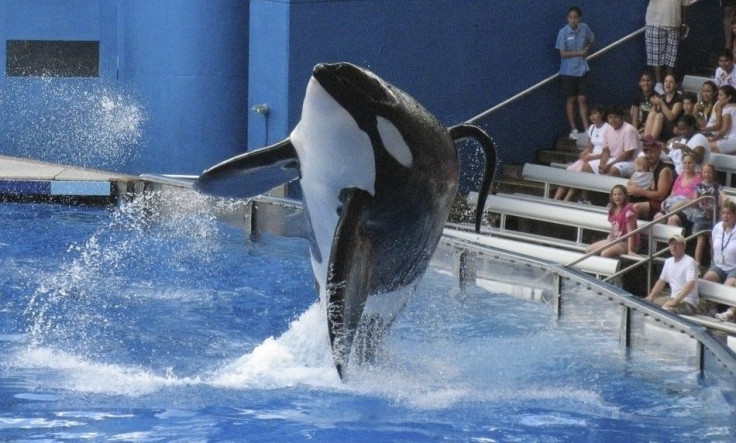SeaWorld to Fight Government Fine over Death of Killer Whale Trainer

SeaWorld of Florida on Monday began challenging federal safety charges that stem from the 2010 death of a trainer, drowned by a killer whale in front of park visitors.
The company faces a $75,000 fine for three safety violations found during an investigation by the Department of Labor's Occupational Safety and Health Administration (OSHA).
The most serious charge is classified as a willful violation, meaning SeaWorld showed plain indifference to or intentional disregard for employee safety and health.
Federal lawyer John Black said in his opening statement that SeaWorld accepted a calculated risk for trainers in allowing them to swim with killer whales at Shamu Stadium.
In February 2010, a 12,000-pound orca bull grabbed 40-year-old trainer Dawn Brancheau by the hair and pulled her underwater, killing her.
SeaWorld trainers have not performed in the water with killer whales since Brancheau's death. But SeaWorld lawyer Carla Gunnin insisted on Monday that trainers in shows perform the same interactions with killer whales that are required behind the scenes to provide good animal care.
The only difference is the addition of lights, music and an audience, she said.
Gunnin said at least one person has had physical contact with a killer whale in connection with an emergency medical procedure since Brancheau's death.
The administrative hearing is being held in Sanford, outside of Orlando. It is expected to last a week, and a final ruling could be months away.
RELYING ON VISUAL CUES
Black said SeaWorld's primary method of protecting its trainers from killer whales was to teach them how to recognize visual cues that an animal might turn aggressive.
Relying primarily on training the trainers to be careful leaves gaps, Black told administrative judge Ken Welsch, presiding over the hearing.
Kelly Flaherty Clark, curator of animal training at the theme park, testified that trainers were required to sign a statement that Black said recognized their own skills are key to being safe.
Clark said trainers working with killer whales need to be constantly aware of the whale's disposition as well as the presence and activities of other whales in the pool and even the weather, which can impact a whale's behavior.
You have to recognize every single thing that's going on in your environment, said Clark, who agreed trainers sometimes make mistakes.
She said SeaWorld had protocols for how to interact with killer whales, but had a separate protocol for handling Tilikum, the largest whale in captivity and the one that drowned Brancheau.
Tilikum was in the pool during two previous incidents since 1991 when people died in the water.
In her opening statement, Gunnin contended that OSHA wants to end physical contact between humans and killer whales.
Watching the hearing was Naomi Rose, a senior scientist for the national and international branches of the Humane Society, which is calling for a phase-out of captive killer whales.
The organization released a report on Monday citing scientific evidence showing that captivity causes early death. The report states that four people have been killed by captive killer whales, while there is no report of a killer whale in the wild causing the death of a human.
Outside the courthouse, seven protesters with the animal rights group PETA held signs that read Throw the book at SeaWorld and Stop imprisoning orcas.
© Copyright Thomson Reuters 2024. All rights reserved.






















